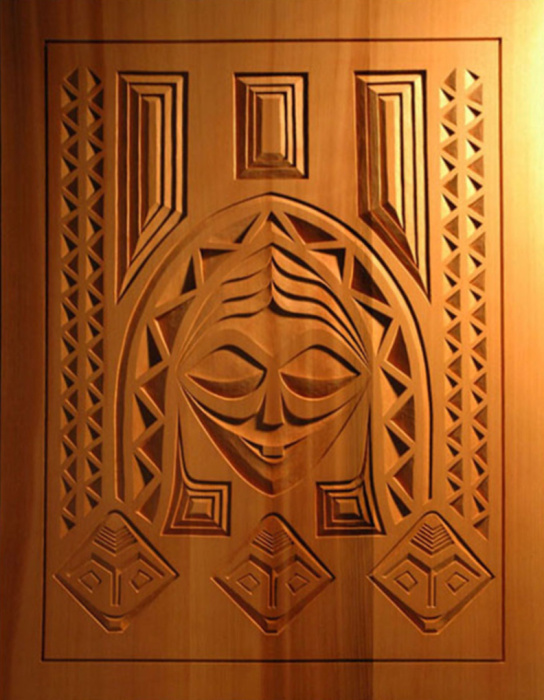Hello, my name is Adam McIsaac. I have spent the last 25 years of my life studying, teaching and producing artwork based on the indigenous peoples of the Columbia River. Historically Columbia River art was found along the river in many forms and mediums. The earliest of explorers recorded carved house posts adorning the exterior and interior of massive plank houses and large Cedar dug out canoes lining the riverbanks. Many people are unaware of this once prevalent existence. Inspired by the history and simplistic beauty of this art form, it has been my passion to bring Columbia River art back to local communities, and acknowledge it as the indigenous art of this area.
Basketry Tamanawas
Columbia River basketry was among the finest ever produced along the West Coast. Cattail, bear grass and hazel brush was among the list of materials used. Artistic two-dimensional designs found on baskets play a role in the make up of this region's art style.
These beautiful works of art inspired Basketry Tamanawas. The center face represents the basket weaver. Along the bottom are humanoid faces in the form of diamonds. This is a common design found in Wasco basketry. Along the sides are triangles that form a zigzagging line. Across the top are concentric squares, both are common elements found in Columbia River art. This carving is an example of how similar carving and basketry are when considering the artistic designs applied.
During a Chinook’s life the quest for a spirit power plays a vital role. Males will search for this power their whole life, while women will stop searching at the time of menstruation.
This power board reflects the acquiring of one such power. The woman in the middle with long adorning earrings has acquired the spirit helper along the bottom. Carved humanoid faces in the shape of diamonds portray this supernatural being. Running along the sides are bands of triangles and concentric squares. The top reflects the trance like state one would inflict upon themselves in hopes to be visited by a spirit power.
